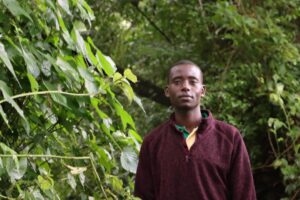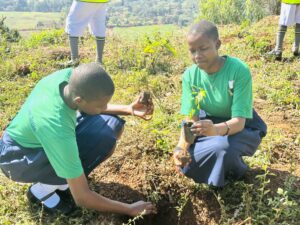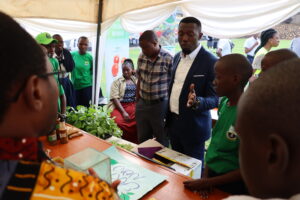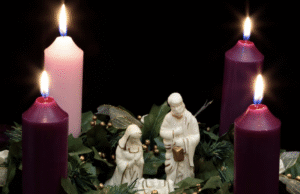By Laudato Voices:
At the heart of Munyonyo, on the serene northern shores of Lake Victoria, stands a towering, resilient sentinel—the Muwafu tree. Locally known as Empafu, this centuries-old tree is no ordinary botanical presence. It is a spiritual landmark and historical witness to one of the most defining moments in Uganda’s religious and cultural history: the martyrdom of the Uganda Martyrs in 1886. The tree is not only the oldest known in Kampala, believed to be over 158 years old, but it is also the sole living witness to the death sentence and beginning of the journey to execution for the Christian converts who would later be canonized as saints.

This sacred tree stands in Munyonyo Martyrs Shrine, a site now revered globally, marking the birthplace of a religious revolution whose seeds were sown in blood, yet whose legacy continues to bloom through the unwavering Pilgrimage of Hope and the Christian faith.

A Tree in the Heart of Faith and History
Often described as “the tree of faith,” the Muwafu tree transcends its biological existence. It holds deep symbolic and spiritual value. In 1886, under the reign of Kabaka Mwanga II, the Christian faith in Uganda faced brutal repression. At Munyonyo Palace, the king convened his royal pages, young men who had embraced Christianity, and issued a grim ultimatum: renounce your faith, or face death (Kaggwa, 1934; Kiwanuka, 1971).
Led by the fearless Charles Lwanga, these young converts chose death over denial. In an act of quiet defiance and unwavering conviction, Lwanga and his companions stepped to the left of the king, a decision that would seal their fate. The Muwafu tree, rooted at the shrine, is believed to have witnessed this chilling moment, when courage triumphed over fear and faith over tyranny.
Munyonyo: Where the Martyrs’ Journey Began
Munyonyo is not merely a geographic location; it is the spiritual threshold of Uganda’s Christian heritage. It is here that Saint Charles Lwanga baptized catechumens in secrecy, including Saint Kizito, the youngest of the martyrs, aged just 14 (Sserwanga, 2015). The king’s violent reaction began with the brutal murder of Saint Denis Ssebuggwawo, who was speared to death after defending the Christian faith.
Following this, on May 26, 1886, a group of bound and condemned Christian pages began their final journey from Munyonyo to Namugongo, where many would be burned alive. That journey began under the silent gaze of the Muwafu tree, the last green guardian of their courage and faith (Nalumu, 2025).

The Sacred Ecology of Munyonyo
The significance of the Muwafu tree is not merely historical—it is also deeply ecological and spiritual. The Munyonyo Martyrs Shrine is surrounded by lush vegetation, reflective of Uganda’s identity as the “Pearl of Africa.” Its cool breeze and vibrant flora provide a serene space for reflection and prayer. The Muwafu tree itself, unlike any other species in Kampala, produces a fragrant incense, enhancing its sacred aura and attracting countless pilgrims (Uganda Martyrs Shrine, 2024).
So venerated is the tree that it had to be gazetted by authorities to protect it from pilgrims attempting to take pieces as holy souvenirs. Today, it stands amidst eucalyptus, palm trees, sausage trees, and mangoes, yet remains distinct, not just biologically, but spiritually. It no longer bears fruit or seeds, making it an irreplaceable specimen and a silent reminder that some witnesses to history cannot be replicated, only revered.

Symbol of Martyrdom and Hope
For the millions of pilgrims who flock to the Munyonyo Martyrs Shrine every year, especially around Martyrs Day on June 3rd, the Muwafu tree is more than a relic. It is a bridge between past and present, between sacrifice and salvation. It embodies the integral connection between human and ecological history, an unbroken thread that ties Uganda’s spiritual identity to its natural heritage (Pope Francis, 2015, Laudato Si’).

While stones and churches may crumble, and names may fade from memory, this tree endures—its bark infused with incense, its shadow touching the earth where saints once walked. It is the living monument of Uganda’s deepest expression of faith.

The Living Witness to Faith’s Victory
The Uganda Martyrs are not only the foundation of Uganda’s Christian identity they are the seeds of faith across Africa and the global church. And at the center of this sacred story stands the Muwafu tree, rooted in history, faith, and the earth itself. When pilgrims look upon it, they see more than an old tree; they see the beginning of a legacy, the endurance of belief, and a silent, unwavering witness to the greatest offering of love, life laid down for truth.
In Munyonyo, beneath the Muwafu’s shade, the story of faith’s triumph continues to whisper through the leaves. May we, who find inspiration in the story of the Uganda Martyrs to form our faith and hope for an integral ecology. St. Adolf Mukasa Ludigo, pray for us. We also remember to pray for Pope who made.

References
- Kaggwa, A. (1934). The Kings of Buganda. Nairobi: East African Publishing House.
- Kiwanuka, M. S. M. (1971). A History of Buganda: From the Foundation of the Kingdom to 1900. London: Longman.
- Nalumu, I. (2025). Munyonyo Martyrs Shrine: Where the Journey of Uganda’s Martyrs Began. Kampala Times.
- Sserwanga, S. (2015). “Charles Lwanga: Uganda’s First Catechist.” New Vision.
- Uganda Martyrs Shrine, Munyonyo. (2024). Official Guide to the Shrine.
- Pope Francis. (2015). Laudato Si’: On Care for Our Common Home. Vatican City: Libreria Editrice Vaticana.














